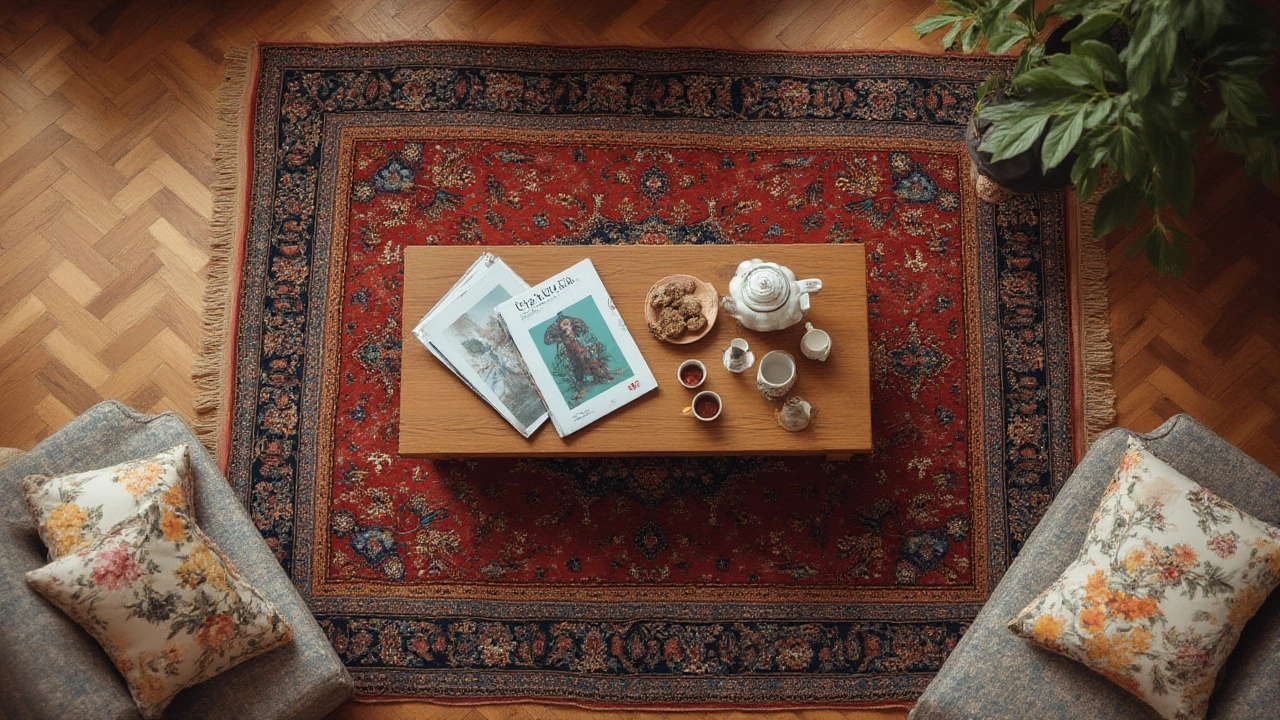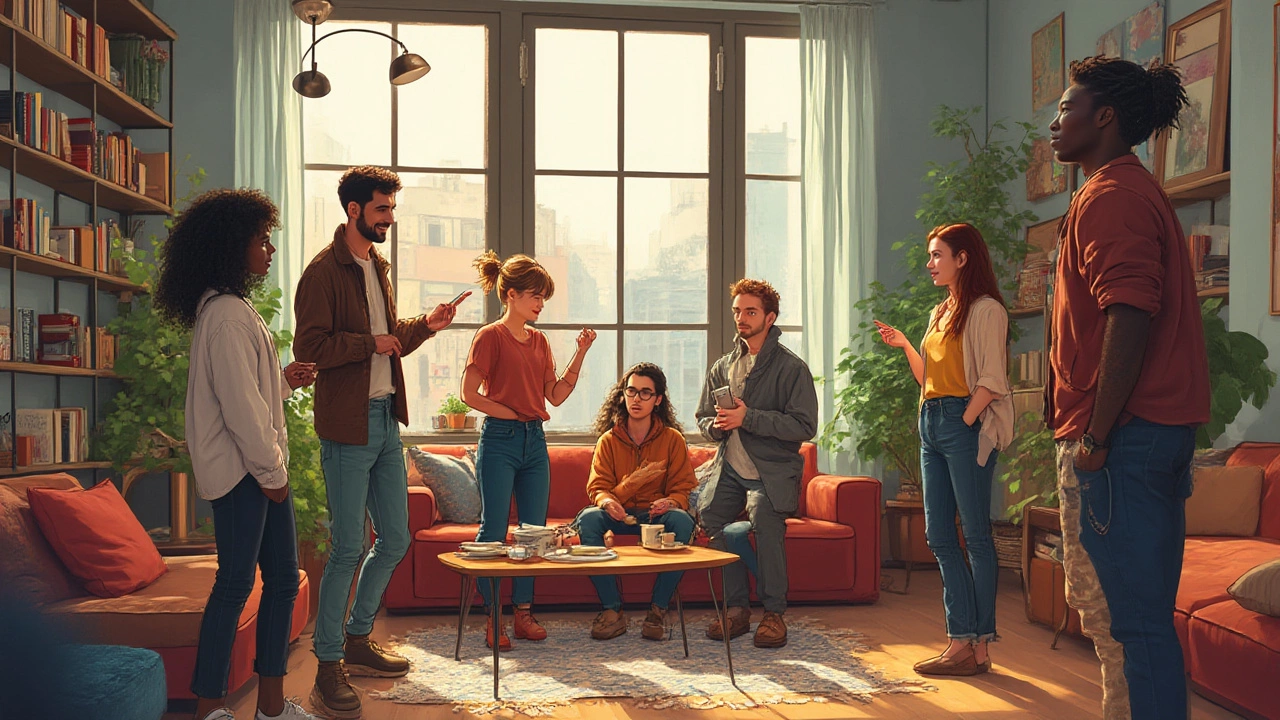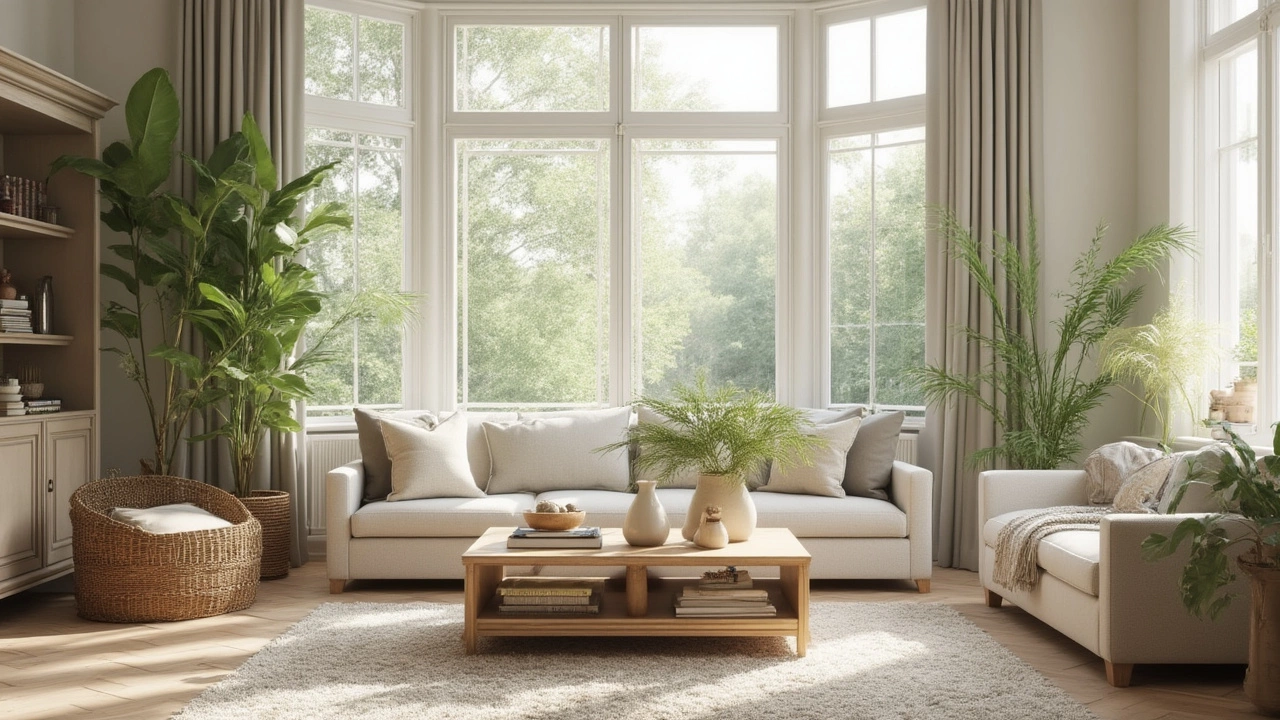Imagine this. You walk into a living room. The furniture’s on point, the lighting’s just right, and the coffee table sits front and center. But something’s off. Is it the empty floor beneath the table? Or maybe, the rug under the table feels too much, almost like a heavy winter coat in the middle of July. It’s wild how one decision—a rug or no rug under that coffee table—can totally change the mood of your entire space. There’s no strict rule in the design playbook. But knowing the facts, the options, and how real people live can shift your whole approach. Let’s break it down and give your coffee table space the attention it deserves.
Why Use a Rug Under a Coffee Table?
People love the look of a rug under a coffee table for a reason. It’s more than just eye candy. Rugs anchor a room, make things cozy, and help with acoustics. Ever notice echoes in a room with bare floors? Drop a rug under that table and boom—sound softens right up. Plus, in homes with open concepts, a rug helps define the living area. Suddenly, you’ve got an “island” for your table, sofa, and chairs that feels like its own retreat. It’s also about comfort. Stepping onto a soft rug in the morning, or sitting around the coffee table for board games, is just nicer than cold tile or scratchy wood.
Designers have been obsessed with rugs for centuries. According to the Textile Museum in Washington, D.C., some of the oldest surviving rugs date back more than 2,000 years. Clearly, people have been using them to warm up spaces for a long time.
But there’s function too. Dropping crumbs or spilling coffee? A rug can save your floor. It also keeps furniture from sliding around. Many modern rugs even come with non-slip backs or can be paired with a cheap rug pad (loads under $30 at big-box stores), making them super practical for busy households or spaces with little ones and pets. In fact, a 2023 study from Home & Living magazine found that 66% of people who bought living room rugs cited “safety and cleanliness” as their main reasons.
Then there’s decor potential. Rugs let you play with color, texture, and pattern, without committing to a big renovation. You can switch up the vibe for seasons or trends easily. For example, try a bold geometric design for some modern drama, or go for a vintage Persian for that classic, cozy vibe. If you’re renting and can’t paint, a great rug is your best bet to personalize your space. They also muffle noise—a big deal if you’re in an apartment or have rowdy kids and hardwood floors.
Let’s not forget layering. Layering rugs (for example, a smaller statement rug over a neutral one) isn’t just for magazine spreads. It can add crazy depth and warmth, making the coffee table zone feel extra inviting. Plus, multiple studies (like one from the UK’s National Institute for Health and Care Excellence) show that soft flooring, such as thick area rugs, can reduce the risk of slip-and-fall injuries by as much as 40% in busy homes.
Check out some key reasons people go for a rug under their coffee table:
- Anchors the room and gives a visual center
- Adds comfort and warmth to hard floors
- Reduces noise and echoes
- Protects floors and provides safety from slips
- Changes the style without permanent reno
- Helps keep furniture from moving
Here’s a quick breakdown of pros according to a 2024 Home Interiors survey:
| Benefit | Percent of People Who Care |
|---|---|
| Style/Visual Appeal | 82% |
| Warmth/Comfort | 76% |
| Protects Floors | 68% |
| Noise Reduction | 54% |
| Safety/Non-Slip | 52% |
People clearly love the combo of function and form. But let’s flip the coin—does everyone need a rug beneath their coffee table? Is it ever better to go without?

When to Skip a Rug (and When It’s Just Not Worth It)
Yep, sometimes skipping the rug is the right call. It really comes down to how you use your space, what your floors are made of, and your style. If you’re a real minimalist, bare floors with carefully chosen furniture can make your room feel bigger and more streamlined. Coffee tables, especially glass or sculptural wood, really pop against hardwood or polished concrete. In Scandinavian and Japanese interiors, less is often more, and bare floors can be beautiful. Unless your home echoes like a cave, or you shiver barefoot all winter, you’re allowed to ditch the rug for a clean, modern look.
Some people worry about cleaning. Rugs can trap dust, crumbs, and pet hair, especially if you go for something fluffy like shag or high-pile. If you’ve got allergy sufferers in the family, you’ll spend a lot more time vacuuming. In fact, data from the American College of Allergy, Asthma and Immunology shows that rugs can hold onto allergens, and regular bare flooring is easier for those who want to keep things hypoallergenic.
Mood matters too. If your floors are stunning—think natural oak, herringbone, or original tile—sometimes a rug just hides what should really shine. Plus, if your coffee table is the star (say, it’s custom made, vintage mid-century, or a piece you hauled back from travels), letting it breathe on the open floor might look better than adding a rug that distracts from it.
There are also practical reasons to skip a rug. If you have young kids who are into crafts, or like eating at the coffee table (hello, pizza and movie nights), you might want to cut down on items that collect spills. If you have pets, especially big dogs that shed, you’ll be vacuuming more than you’d like. And if your living space is really tiny, a rug might chop up what little floor area you have, making the room look smaller. That said, sizing matters. A rug that’s too small for the area will make everything look odd—a classic decorating mistake. According to the American Society of Interior Designers, at least two feet should stick out beyond your coffee table in any direction to avoid the “doormat” effect.
If your floor is high-traffic and the finish is already worn, sometimes a rug just moves around too much. You’ll be constantly straightening it, or worse—dealing with curled corners (trip hazard alert). If you live somewhere hot, the thought of a rug might feel stifling. Cool, bare floors have their charm, especially in summer.
Here are a few times when skipping the rug might be the move:
- Your floors are beautiful and in great shape
- Minimalist or modern styles are your thing
- Cleaning and maintenance are not your jam
- You have allergies or want a hypoallergenic home
- Your coffee table makes its own design statement
- You live somewhere warm and want a breezy vibe
- The living area is very small
So when is a rug not worth it? Probably when it feels like a compromise—just something you’re adding because you think you should. Trust your gut, but also be real about how you live. Style is nothing if it doesn’t suit your daily habits.

Tips for Choosing (or Skipping) a Coffee Table Rug
Still can’t decide? Let’s hit some practical tips. First, measure your space, not just the table. The rug should anchor your seating area, not just peek out from under your coffee table. For a standard living room, a good rule is to leave about 18 inches of floor space between the edge of the rug and the walls—unless your room is really tight. Pick a size that’s larger than your table, with the front legs of sofas and chairs sitting on the rug. This keeps things balanced and prevents the “floating island” look.
If you want your living room to look put together, consider color and pattern. Pick up on tones in your cushions, wall art, or curtains. If your sofa is solid, a patterned rug can add drama. If your room is already busy, a solid or low-key textured rug keeps it grounded. Texture is important too. Thick, plush rugs are cozy but a pain to clean. Low-pile rugs or flat-weaves are easier to deal with, especially if you’ve got busy kids or pets. Don’t be afraid to layer—a neutral base with a smaller, bolder rug on top gives flexibility, especially when you want a winter/summer swap.
Material matters. Wool is durable and naturally stain-resistant, but can be pricey. Synthetics (like polypropylene) are affordable, especially if you’re expecting lots of traffic and spills. Natural fibers like jute look cool and are budget-friendly, but can be scratchy if you’re lounging on the floor a lot. Cotton’s soft, often washable, but usually wears out faster.
If you do go rugless, give extra attention to the other elements around your coffee table. Maybe try a cool tray for remotes, a stack of stylish books, or a few plants to keep the area lively. If you have a floor you love—a stunning stain on hardwood, a Spanish tile, or even polished concrete—think about furniture pads. They’ll keep your rug under coffee table decision stress-free by stopping scratches and making your table easy to move for cleaning.
If you love to change things up, there’s no shame in rotating between rugs and bare floors during different seasons. Plenty of families use a plush rug in winter, then store it in summer for a lighter look. Some even keep more than one style to swap out when they want—a good way to refresh your room on a tight budget.
Always keep your lifestyle top of mind. Do you eat at your coffee table? Does your dog turn every rug into its private bed? Do you have kids who drop everything in sight? Or are you all about perfect lines and open space? There’s no wrong answer. Decorating is personal, and your coffee table setup should make you happy every day.
Here’s a simple checklist for making the call:
- Measure your seating area, not just your coffee table.
- Pick a rug at least 18-24 inches larger than your table on all sides for balance.
- Match color and pattern with other room accents for cohesion.
- Pick material based on use: wool for luxury/durability, synthetics for easy care, jute/cotton for budget.
- Layer up for flexibility—combine a base neutral rug and a statement piece for versatility.
- Go rugless if you prefer easy cleaning or want to show off cool flooring.
- Style your coffee table area with books, trays, or plants to keep it from feeling bare.
Your coffee table is the heart of your living zone. Rug or no rug, make your space real, comfortable, and uniquely yours.


Write a comment